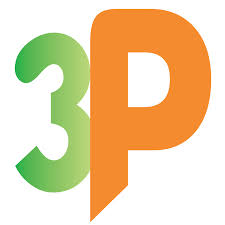Pakistani food was traditionally packed in woven bamboo baskets, plastic boxes and wooden boxes made of para-rubber wood. Since the packages did not effectively protect the produce during transport there were tremendous losses. In addition, these packages were uncompetitive in the world market, in terms of appearance, ease of handling, use and disposal, and strength properties. Since the 1990’ies Pakistani authorities have realized the importance of improving the standards of packaging for products sold both domestically and overseas. The packaging industry in the country grew at a CAGR of 9.17% during the period 2009- 12. This is primarily attributed to the growing demand in end-user markets. However, the unfavorable economic conditions in 2013 affected consumer demand and overall industrial activity in the country. The economic situation in Pakistan is expected to improve during the period 2015-16. As a result, the packaging industry is expected to register a CAGR of 6.38% during this forecast period.
Slows Growth:
Packaging in Pakistan registered moderate growth in 2010-2012. This was due to several negative factors such as uncertainty over the pace of the ongoing economic recovery coupled with political instability. Consumers spent cautiously and this negatively affected consumer goods consumption. Consequently, packaging demand was also compromised.
Increase in Single-serve product sizes:
Due to the higher prevalence of busier urban lifestyles and eating and drinking on-thego, more single-serve packs were launched in Pakistan during 2010 and packaging producers continued to adapt to this changing demand. Lighter, smaller sized packs and improved closures were some of the areas in which packaging development was seen in response to this evolving consumer trend. Another trend which led to rises in single serve packs was the trend towards eating healthy and fresh food in single-serve packs which do not need to be resealed and kept for future consumption. Another factor was the lower retail price of single-serve packs, which helped sustained demand during 2010.Small packs carry a lower retail price and are therefore more affordable. For example, single-use sachets remained popular in shampoos and conditioners.
Change in Packaging Type:
Rising incomes and increased education and awareness is leading to a growing trend for the consumption of health wellness products in categories such as food, beverages and beauty and personal care products. In light of this, special packaging types for such products are also emerging, including the high quality plastic bottles and jars used for premium health and wellness oriented food. Furthermore, many premium beverages, especially juice drinks, are being packaged in glass due to its superior chemical compatibility with the product. The increasing consumption of yogurt, which is considered to be very healthy, has positively impacted demand for thin wall plastic containers in spoon able yogurt and rigid plastic, mainly HPDE bottles, in drinking yogurt. Many such premium healthy products require packaging with high quality graphics, designs and labeling. Often, healthy eating entails the consumption of smaller portions, particularly in indulgence categories such as confectionery and sweet and savoury snacks, and this trend is also helping drive demand for smaller packaging sizes. Many Pakistani brand owners continued to select flexible packaging as their main type of packaging for both food and non-food products during 2010-12. This is due to its lighter weight and inherent economic benefits over other packaging types. Flexible packaging can be used for many applications including flexible plastic and stand-up pouches. Furthermore, new areas of innovation in flexible plastic such as microwaveable packaging, boil-in-bag and push-through blister packs are all helping many manufacturers to bring innovation to their products.
Bio-plastic:
Due to the rising concern for the use of eco friendly packaging, bio-plastic is currently being evaluated in Pakistan as a viable alternative to more conventional plastic as well as other packaging types. The interest in bio-plastic stems from its inherent advantages. However, the use of bio-plastic packaging is still at an early stage in Pakistan. There are many agricultural products which can be used as the raw materials for bioplastic production. However, as the cost of its production is still several times higher than for conventional packaging and there are fewer packaging manufacturers currently interested in offering their products with bioplastic packaging, bio-plastic may take some time to take off fully in Pakistan.
Industrial packaging cannot grow by itself but it will grow in parallel with the product, how big or small will depend upon the number of products. Every product should have packaging to prevent itself and to increase its product value. If production is high, packaging will also be high, it is like a shadow. If the economy of the country is good, both internal and foreign trade will also increase. Production will rise and therefore resulting in the rise of the use of packaging. It is like a chain that is tied to each other forever. Packaging therefore becomes an economic indicator for the country. When consumers have the purchase power to buy products, it would mean that consumers have good earnings and this is a reflection of the country’s economy. In order to be able to compete with the world’s market, Pakistan’s industrial packaging should always be modernized and updated, the products life span should be extended as long as possible, its image should be outstanding enough to attract those who saw, its product value should increase, it should be able to respond to consumer’s behavior, it should be in line with the modern market, and it should be able to adapt to the new and changing delivery system and technology in production. For the future, the use of various form of packaging will increase, i.e. Portable Packaging for snacks foods and others, Aseptic Packaging, Standup Pouch Packaging, E-commerce Packaging, Photodegradable Packaging and Environmental Friendly Packaging. All these forms of packaging will increasingly have more roles and will be used tremendously both internally and abroad according to the number of products made for the world’s population. Form the reasons mentioned above, industrial packaging in Pakistan for 2017 will continue to grow which should not be less than 10%.











